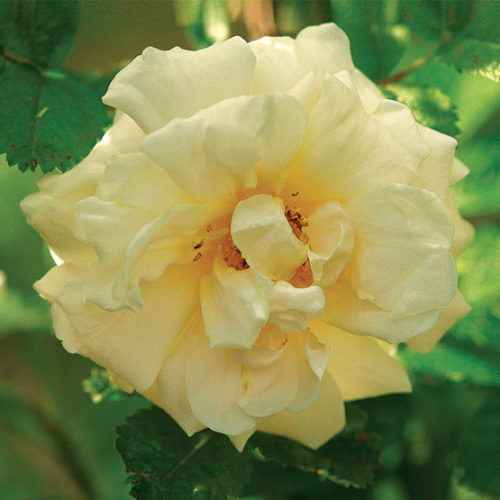
‘Agnes’ is one of the few yellow rugosa roses, and it epitomizes the finest rugosa attributes in both leaf and overall form. Doubled blooms give this selection an old-fashioned aspect, as does its delightful fragrance, which is reminiscent of antique roses. Bloom color changes somewhat with the temperature: in cool temperatures, the flowers are an apricot hue, but as the weather warms, they turn a soft yellow. -Suzanne Verrier, No muss, no fuss rugosa roses, Fine Gardening issue #121
Noteworthy CharacteristicsRugosa roses are listed as an invasive plant in some areas, including Connecticut, Massachusetts, New Jersey, New York, Rhode Island, and Washington.
CareProvide full sun, good air circulation, and fertile, well-drained soil. Top-dress with compost after planting and every subsequent spring and fall.
PropagationDig up suckers in fall and, with a sharp spade, cut the root that connects the sucker to the shrub as close to the mother plant as possible. Leave the sucker in place in the ground until early spring, by which time it will have developed its own root system. Transplant it to a more desirable location.
ProblemsJapanese beetles, rose stem girdler, deer.
- Genus : Rosa
- Zones : 2, 3, 4, 5, 6, 7, 8, 9
- Plant Height : 3 to 6 feet
- Plant Width : 3 to 6 feet
- Bloom Time : Early Summer, Late Spring, Late Summer, Spring, Summer
- Growth Rate : Fast
- Characteristics : Fragrant Flowers, Showy Fall Foliage, Showy Seed Heads
- Light : Full Sun
- Moisture : Medium Moisture
- Maintenance : Moderate
- Plant Type : Shrubs
- Plant Seasonal Interest : Spring Interest
- Flower Color : Yellow



























